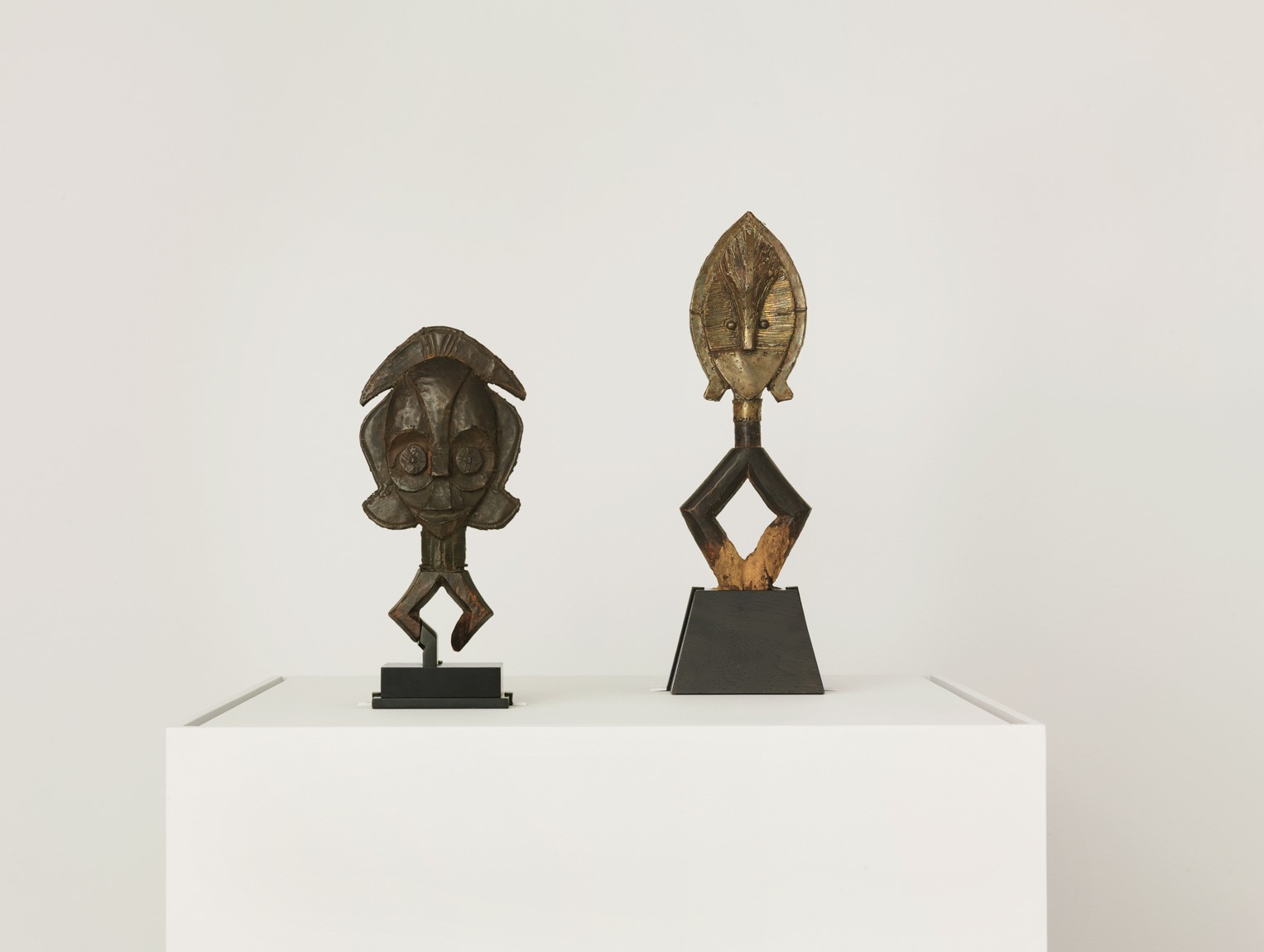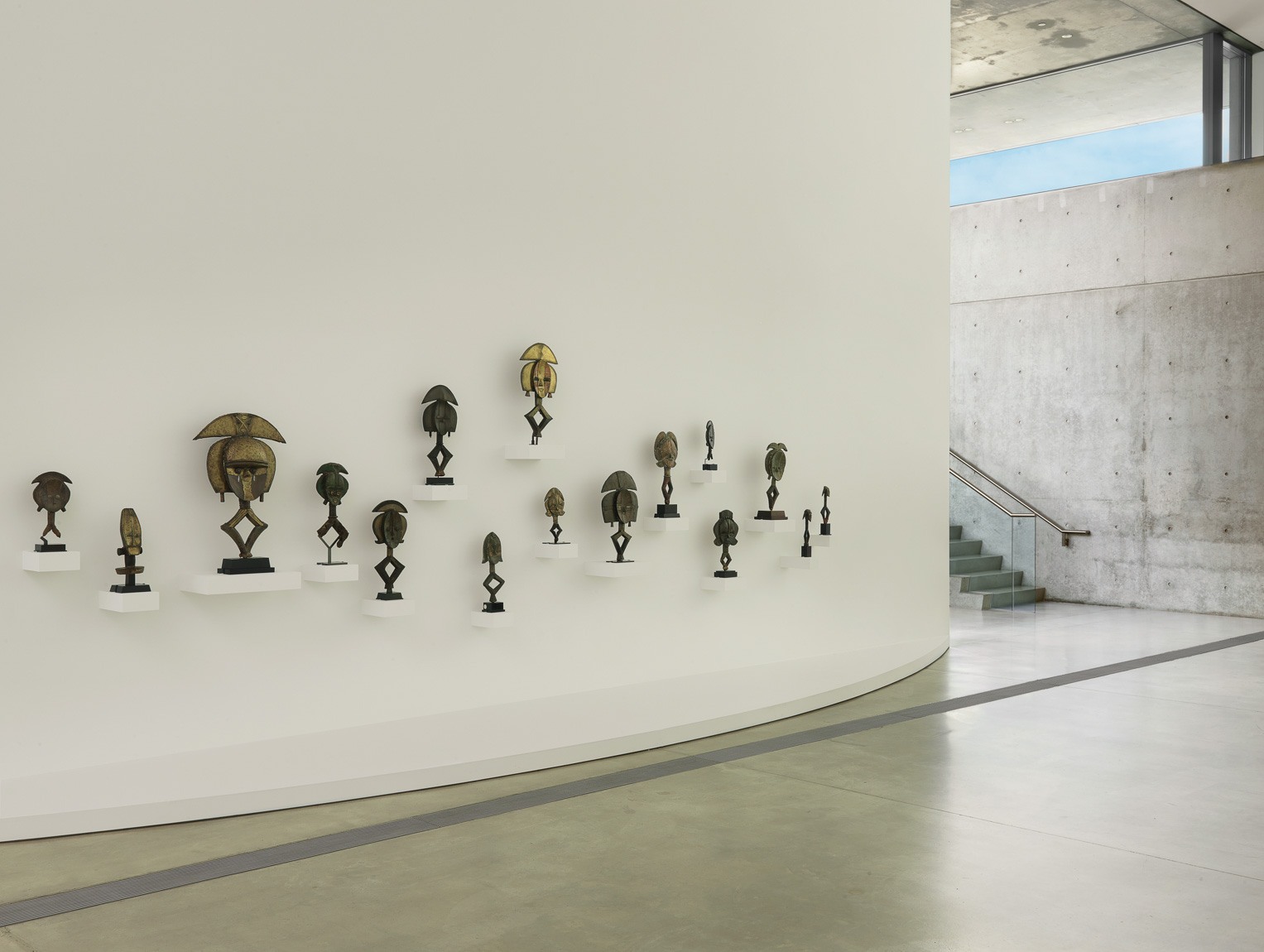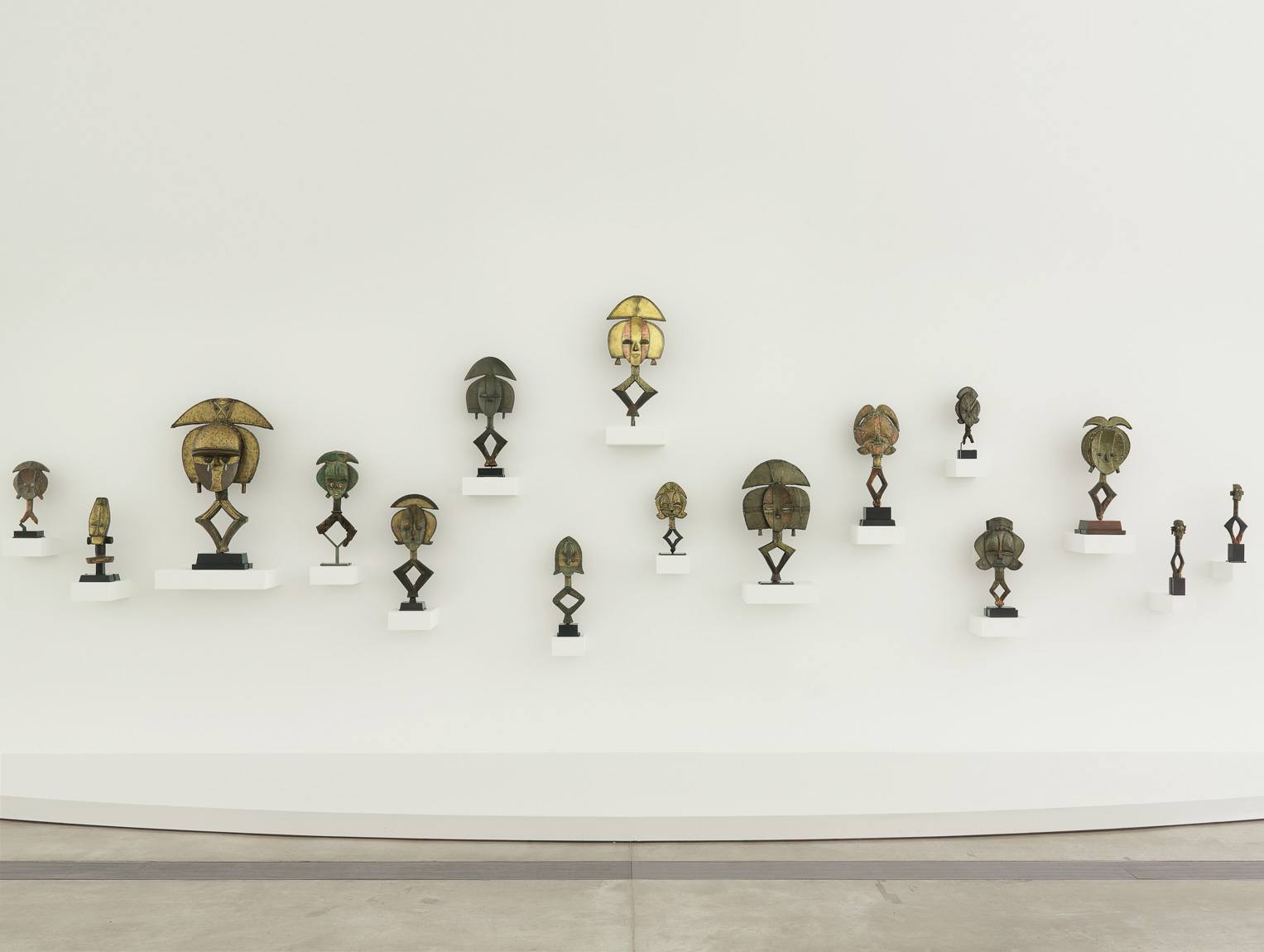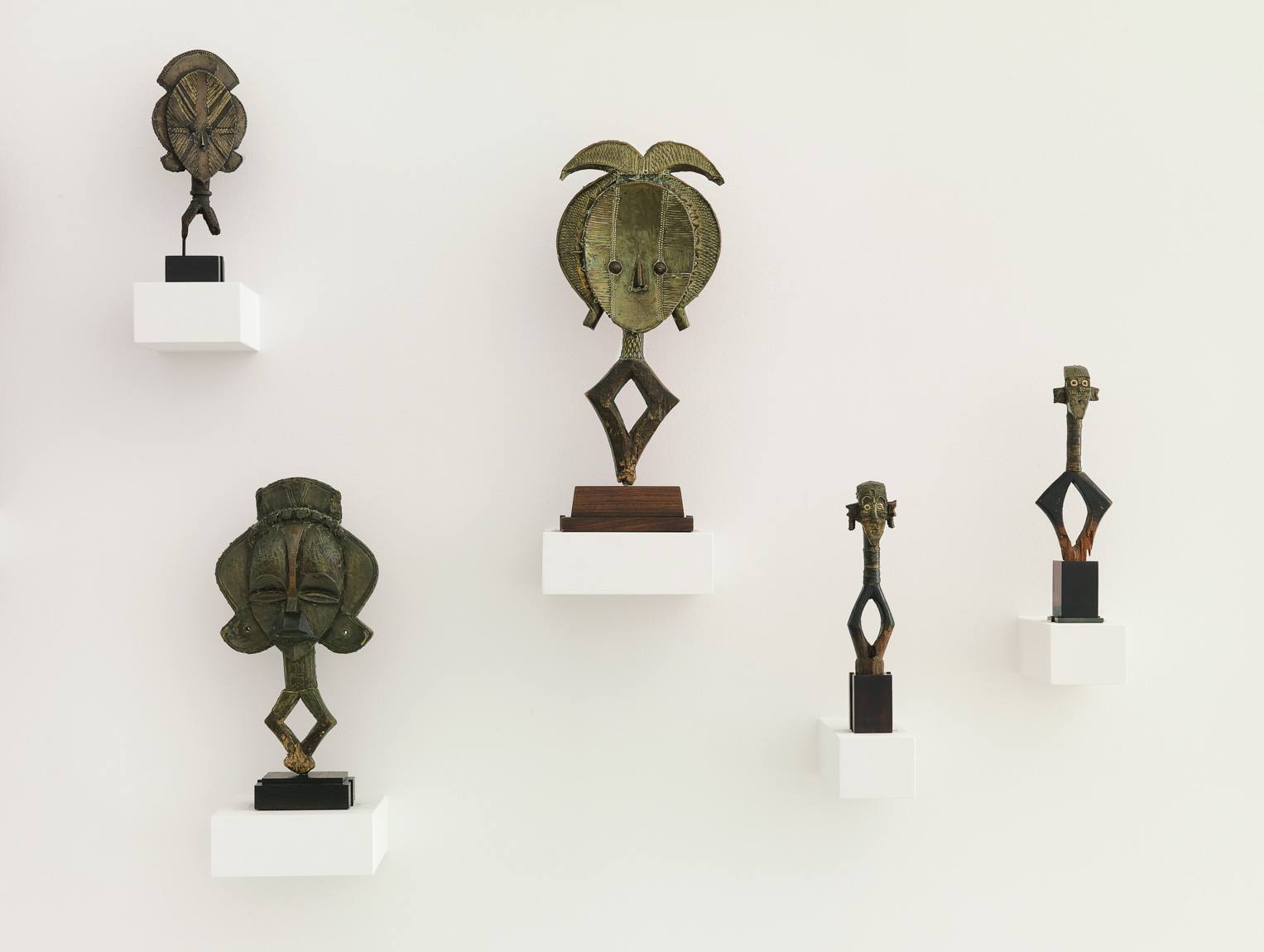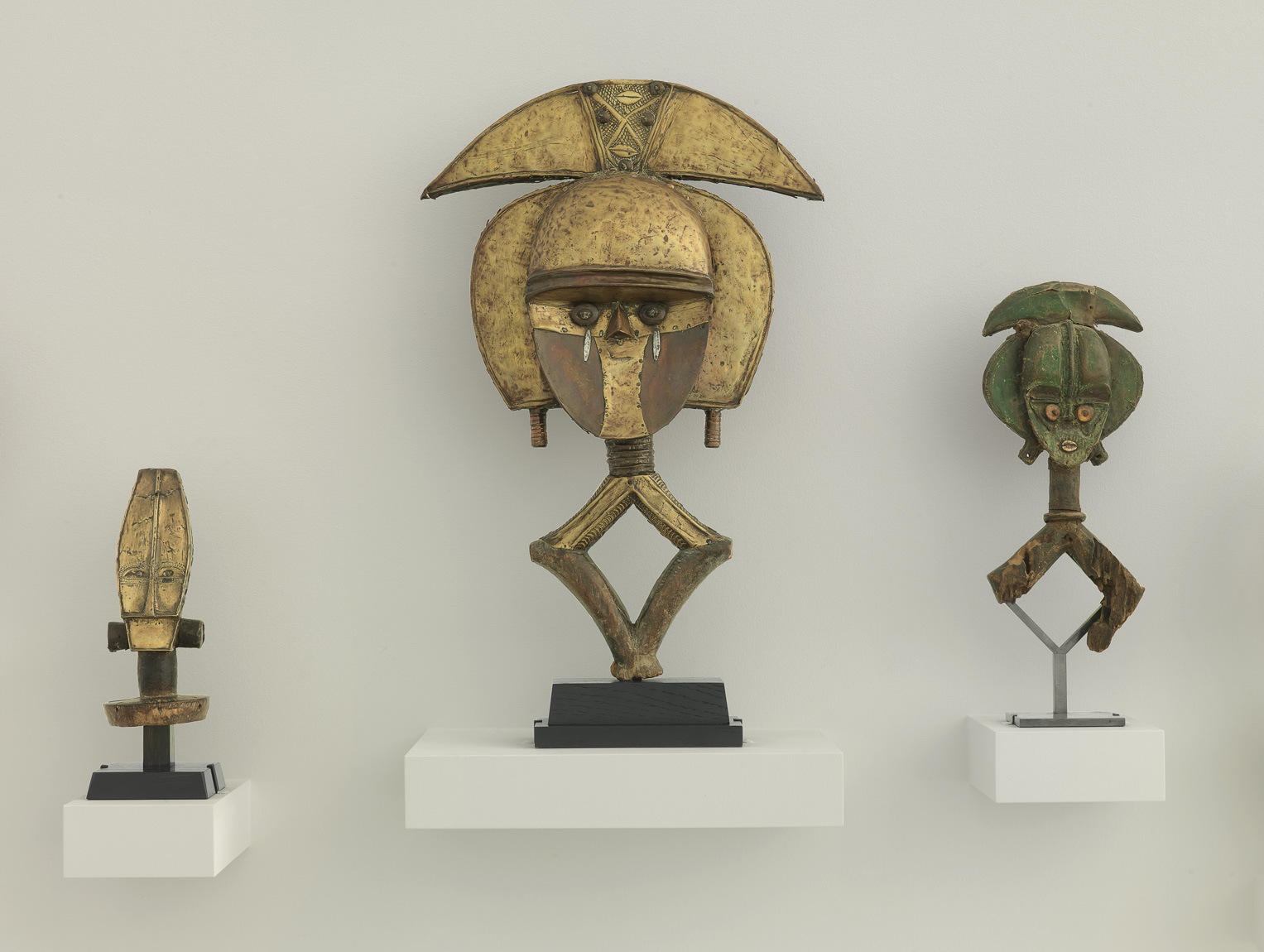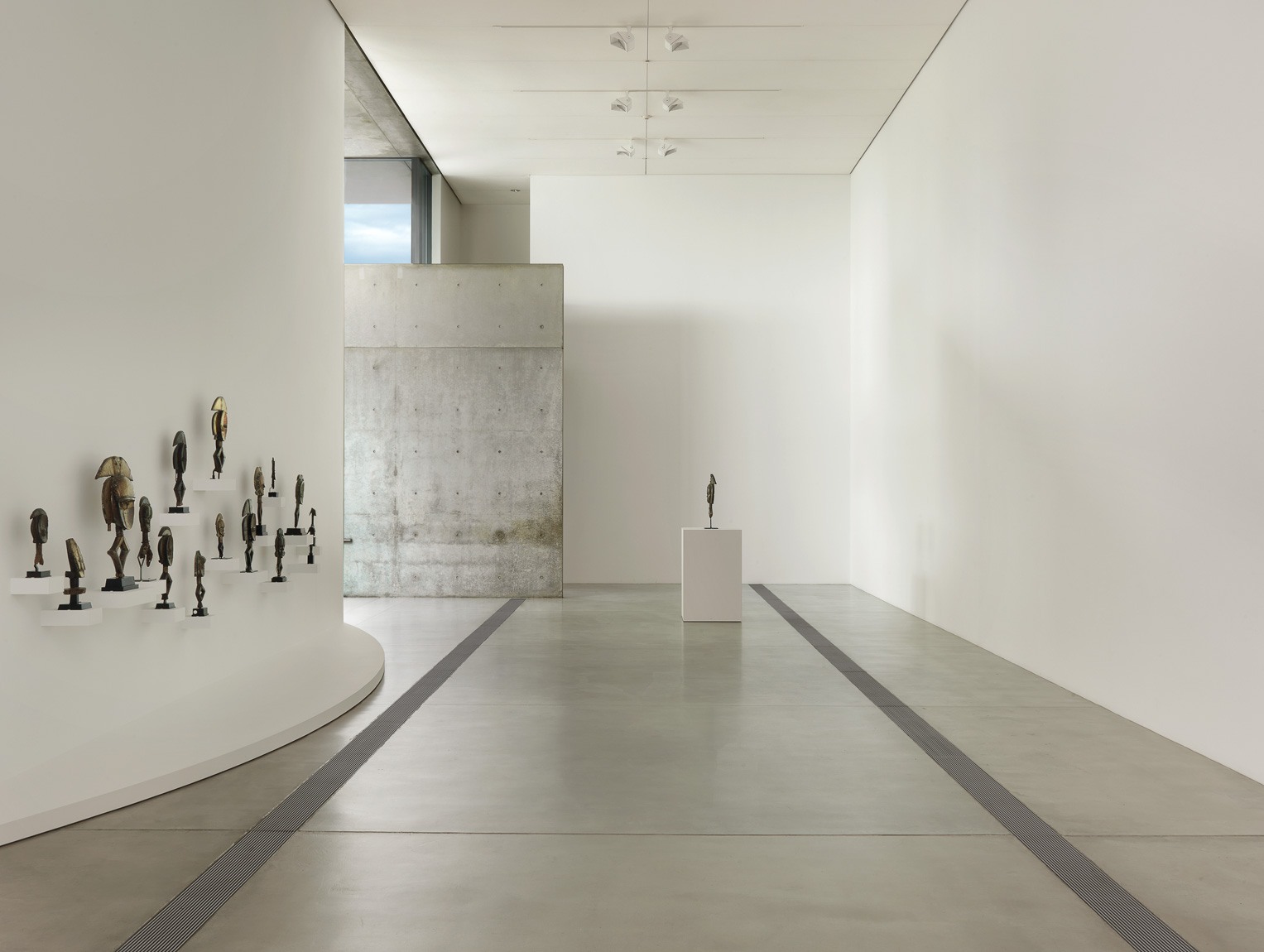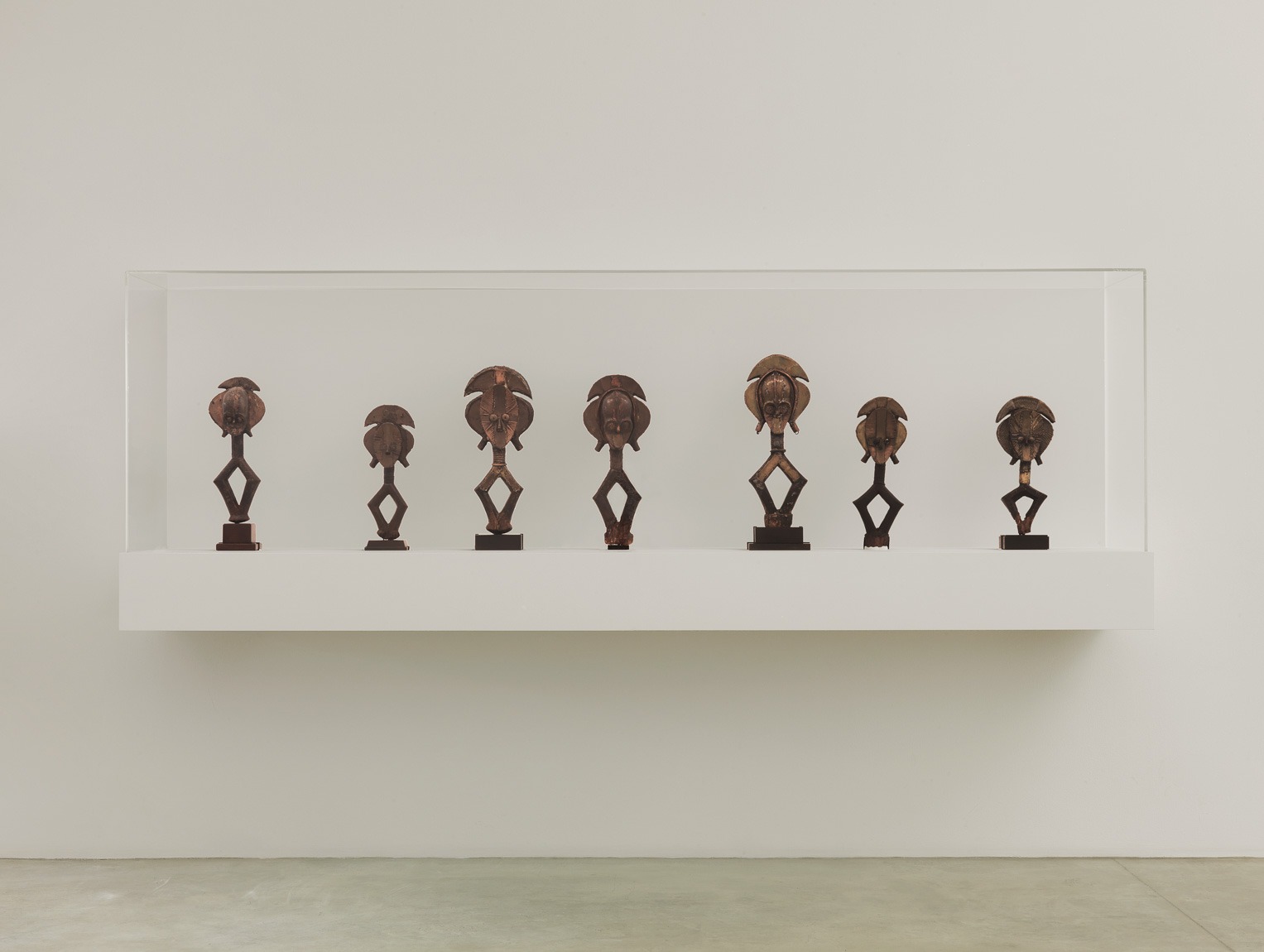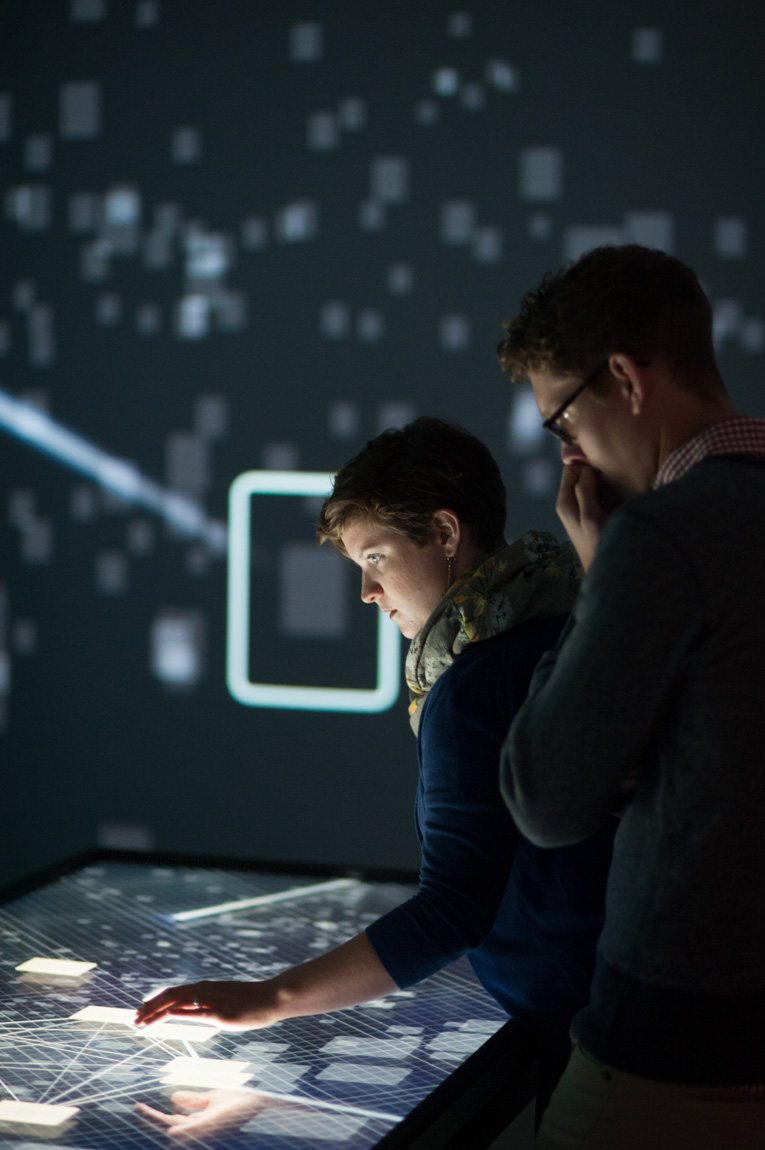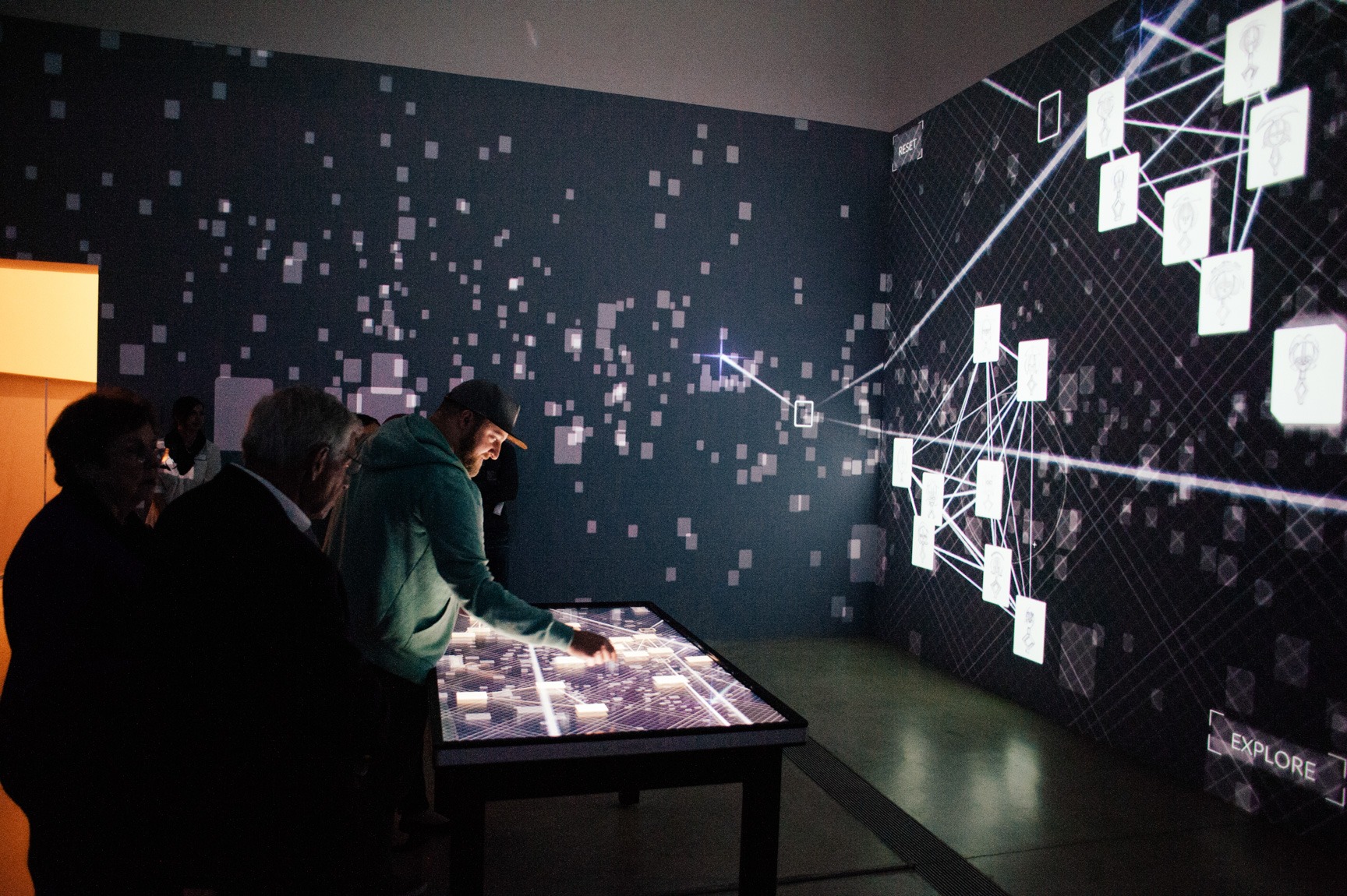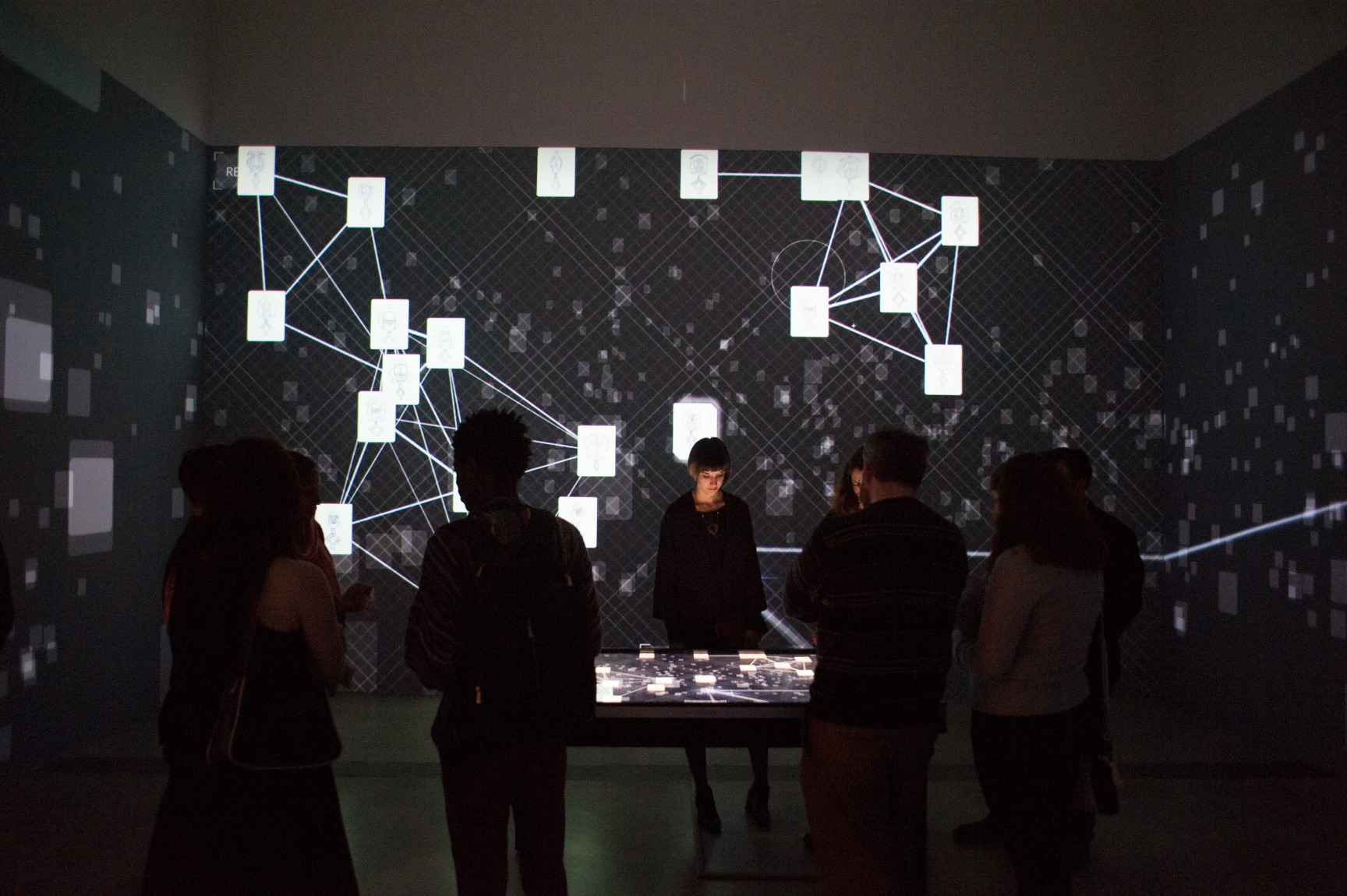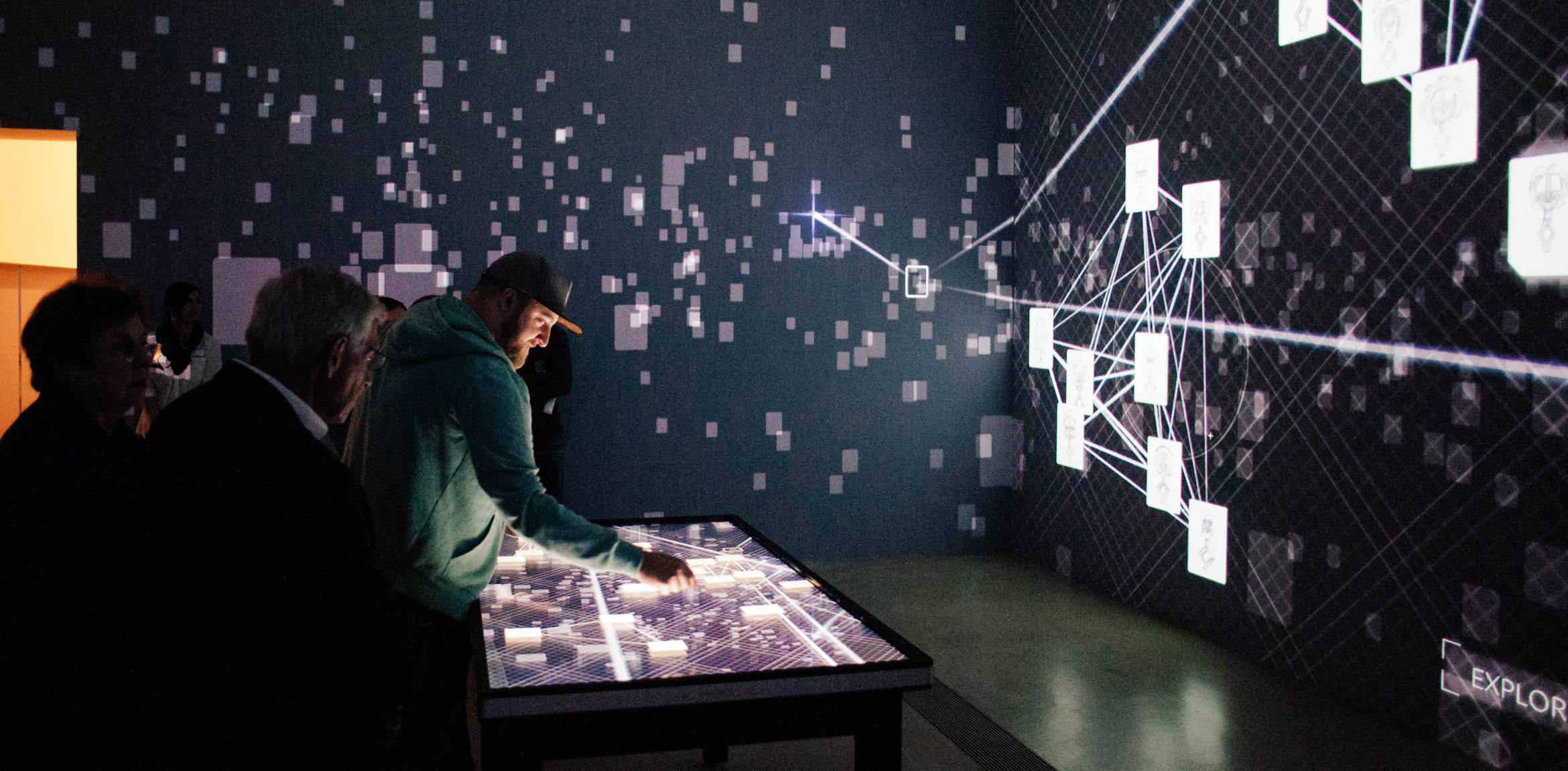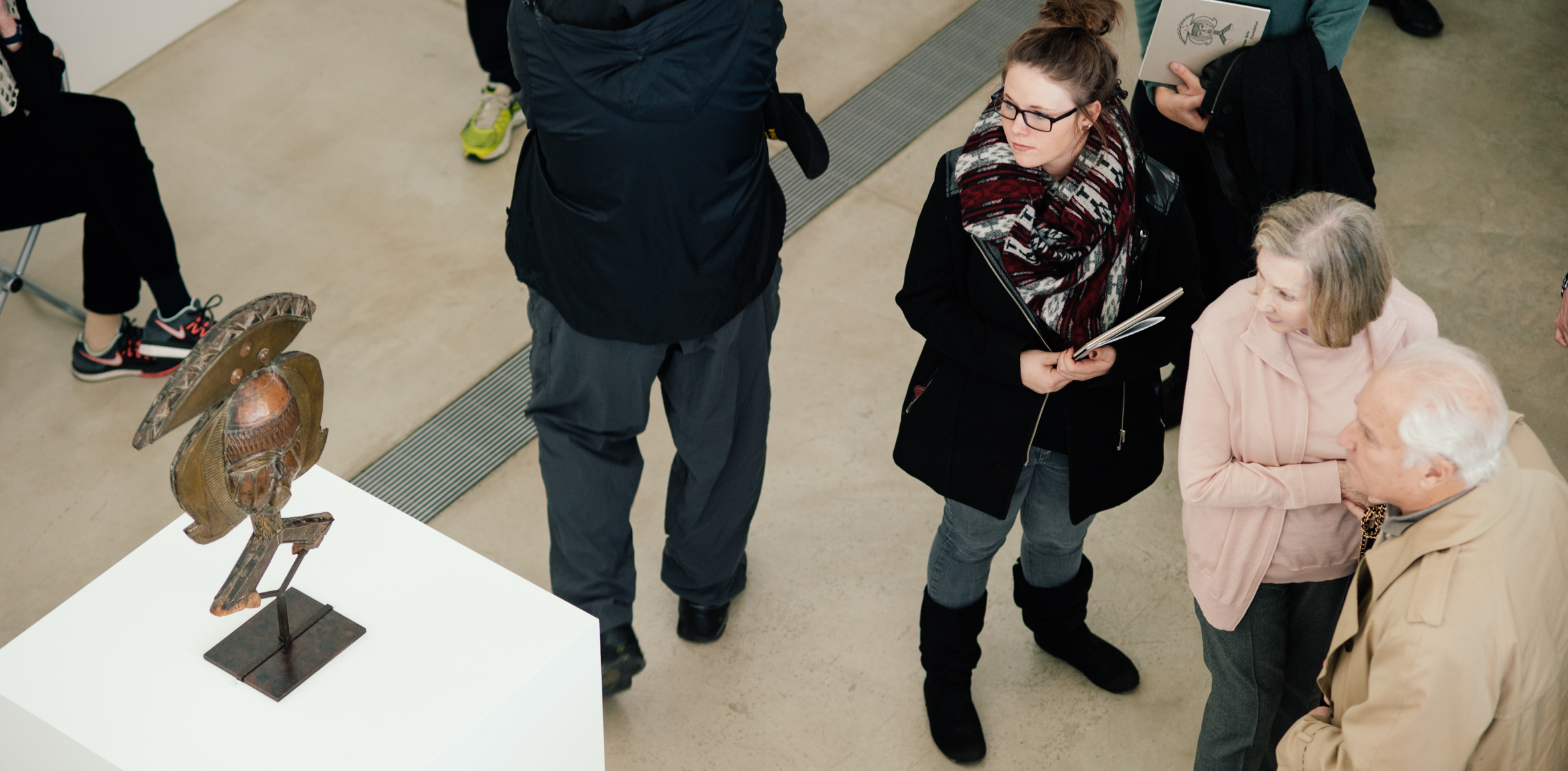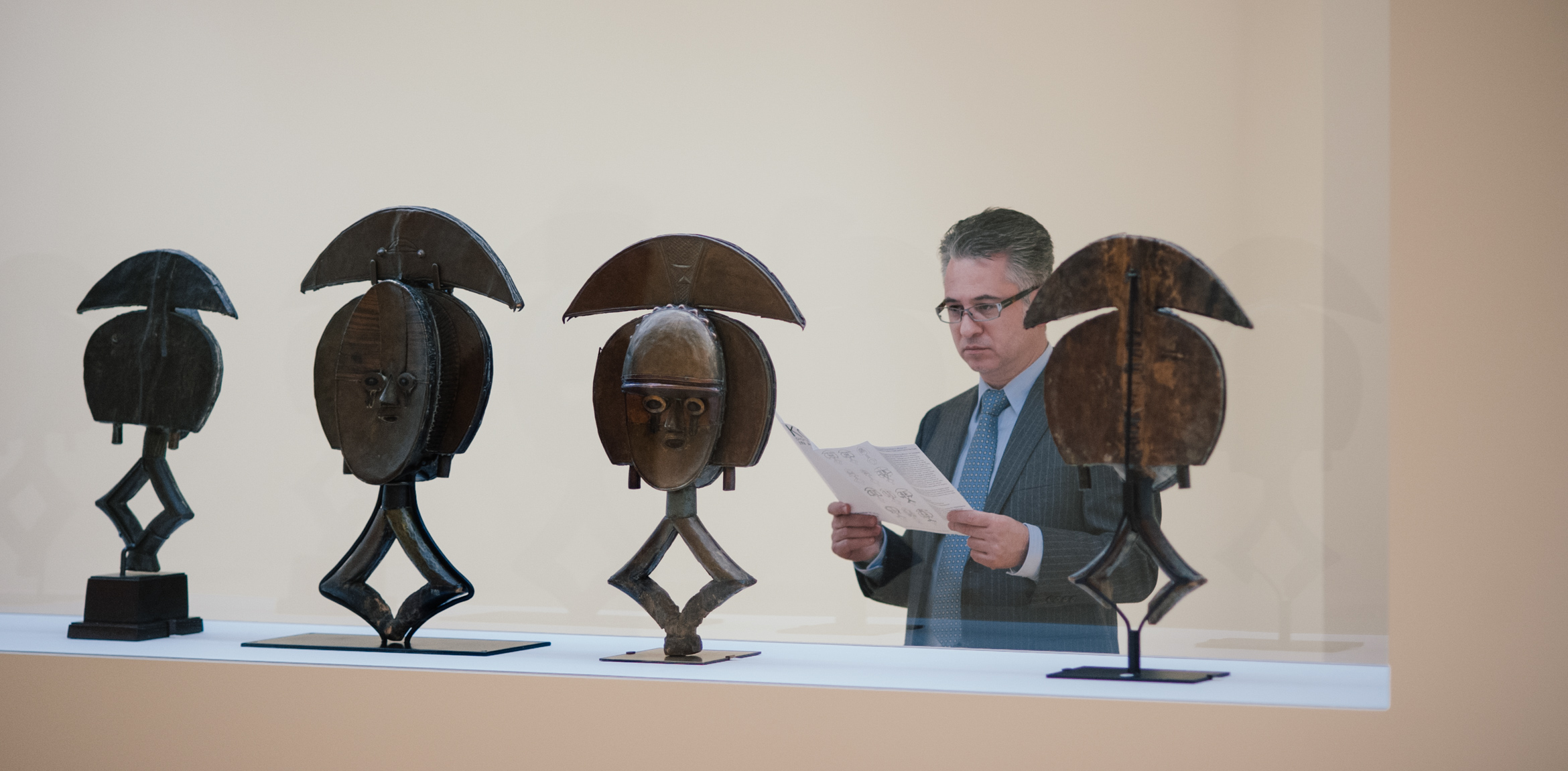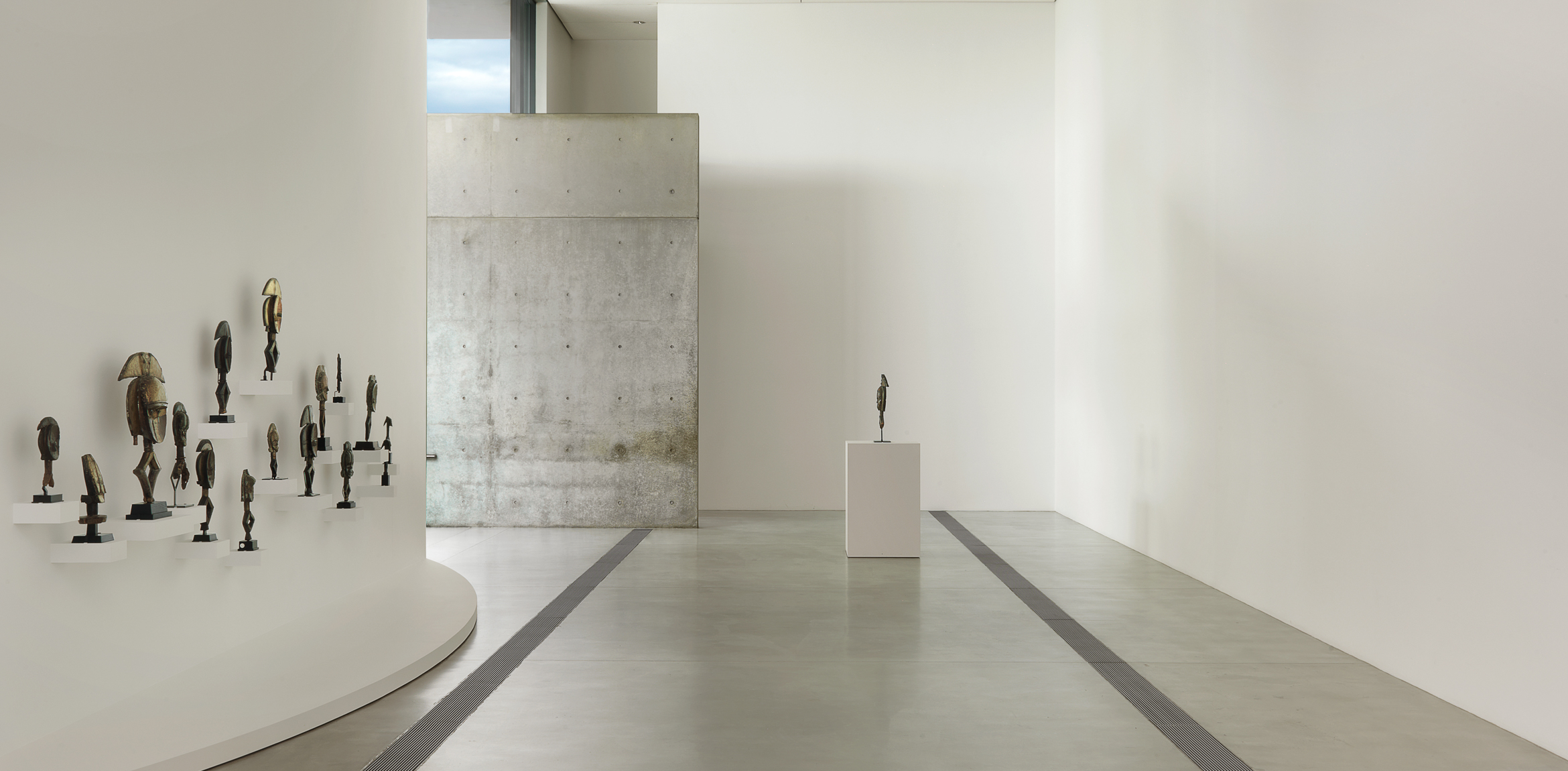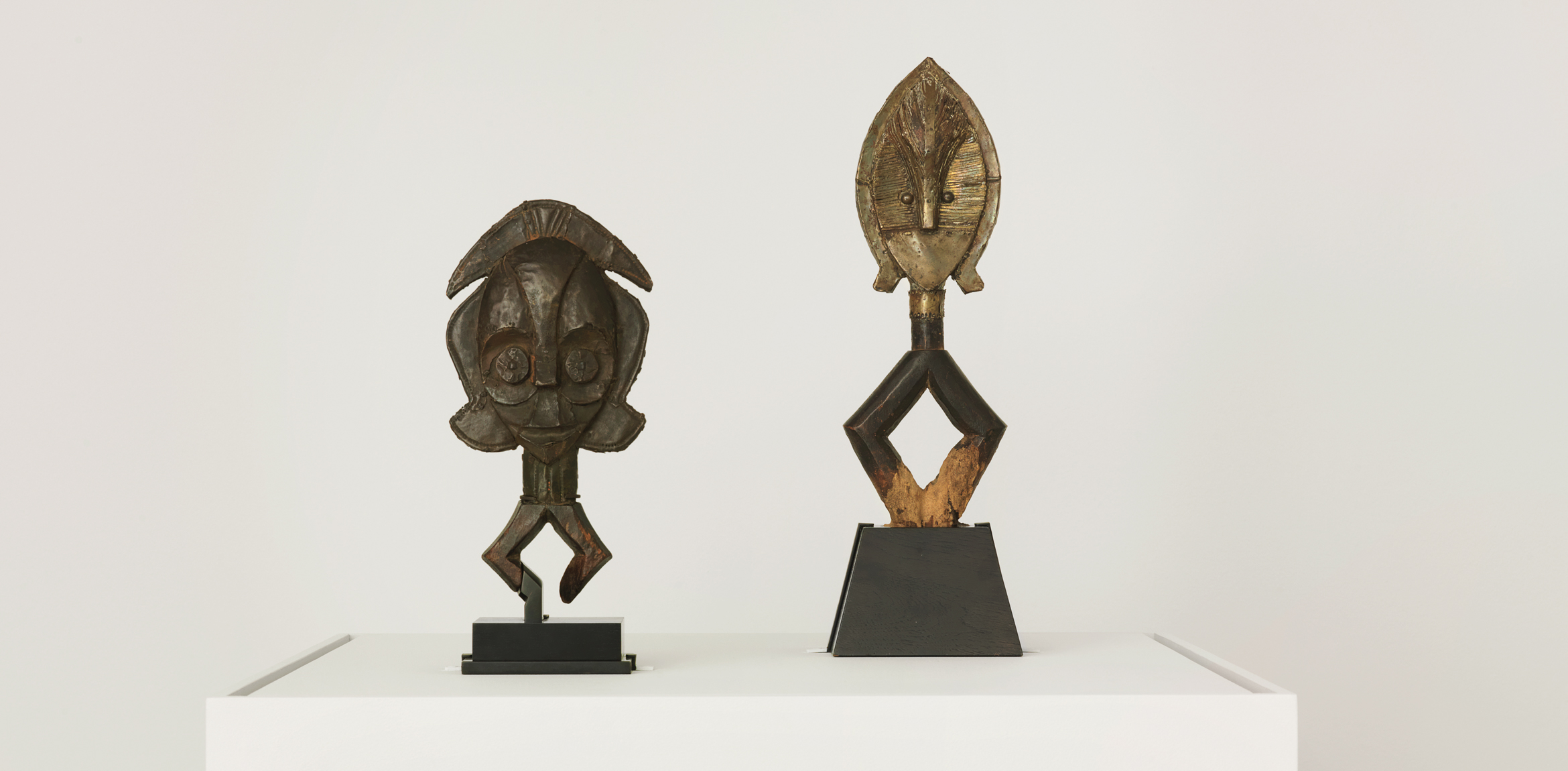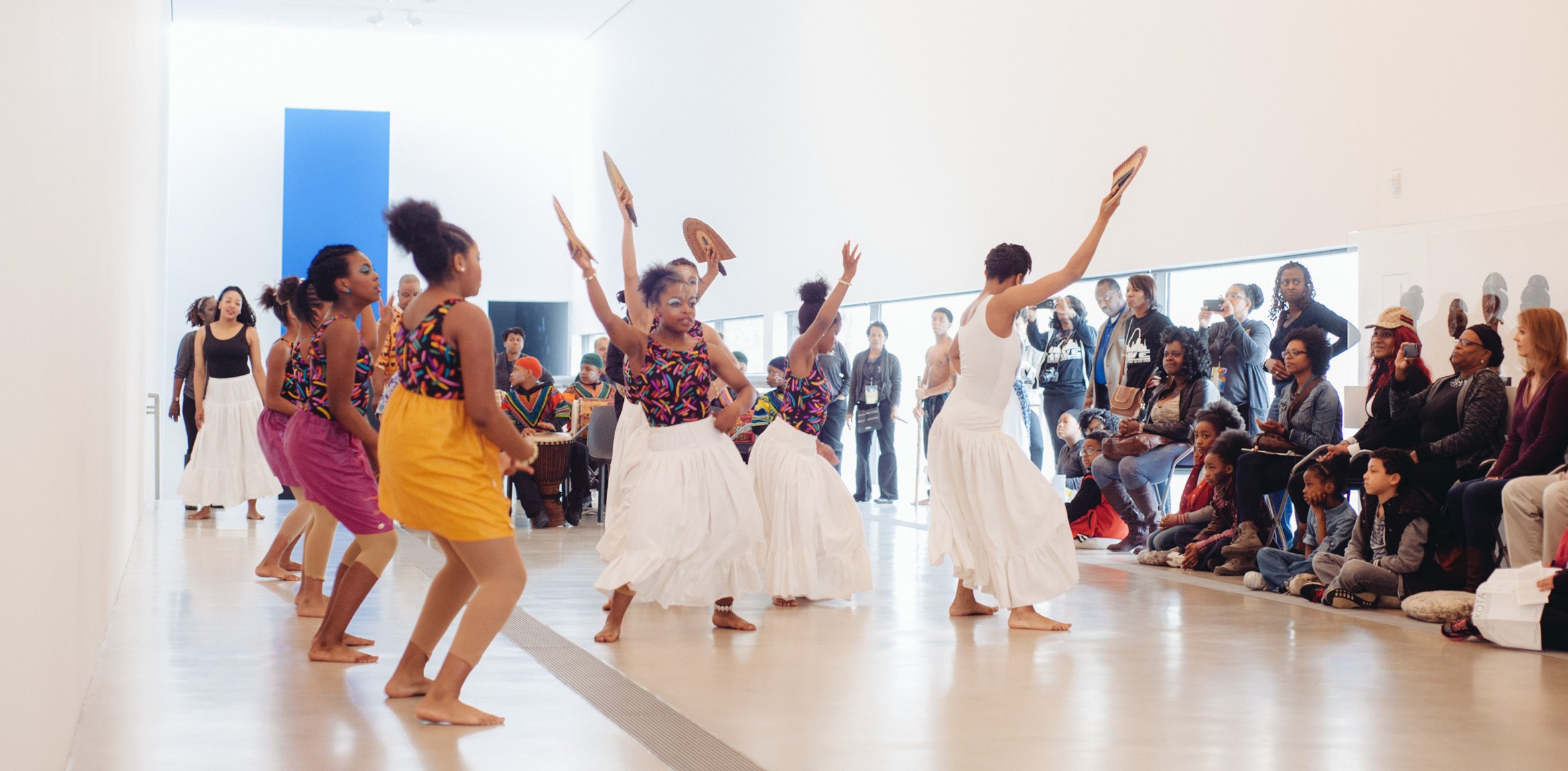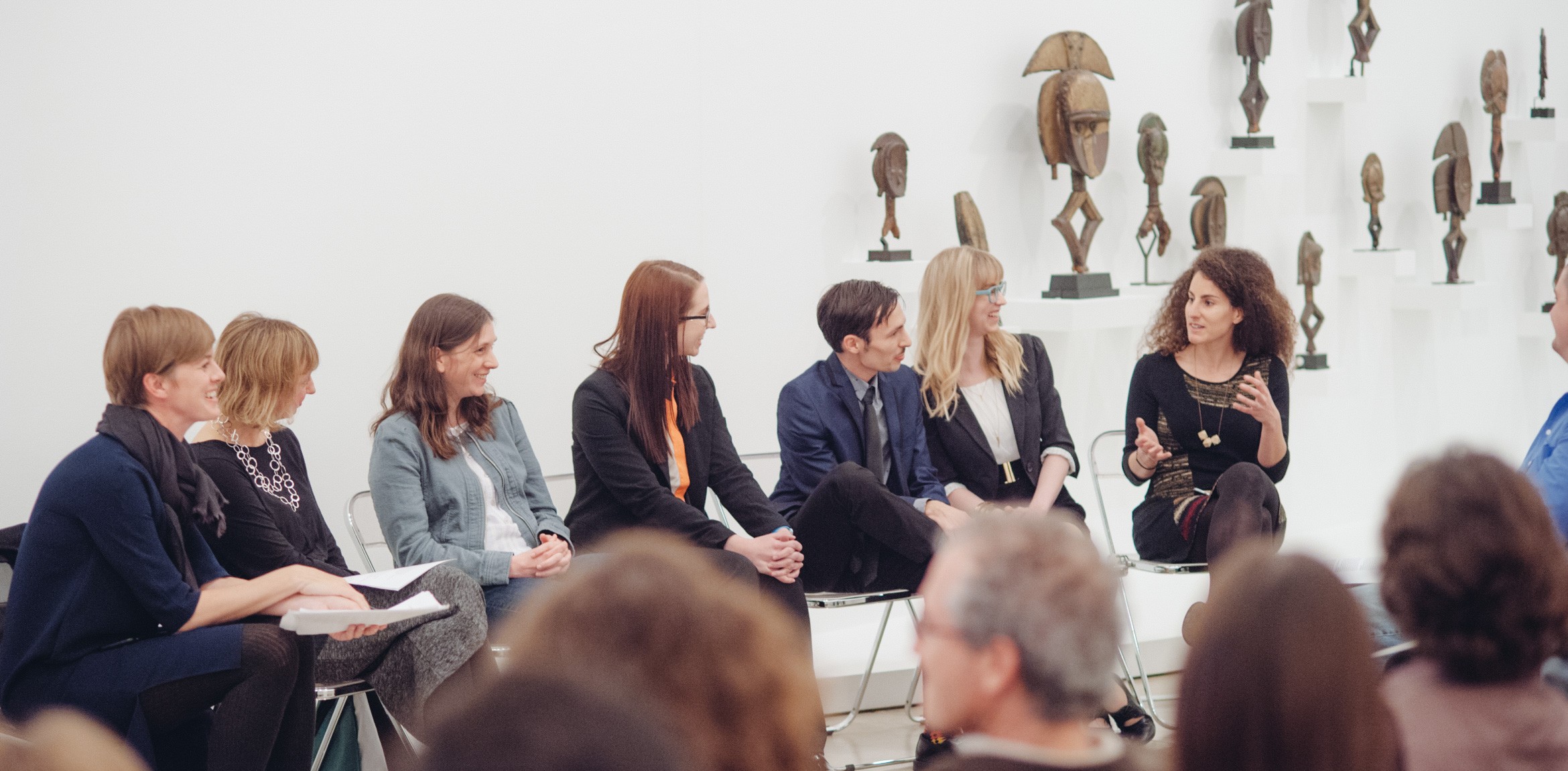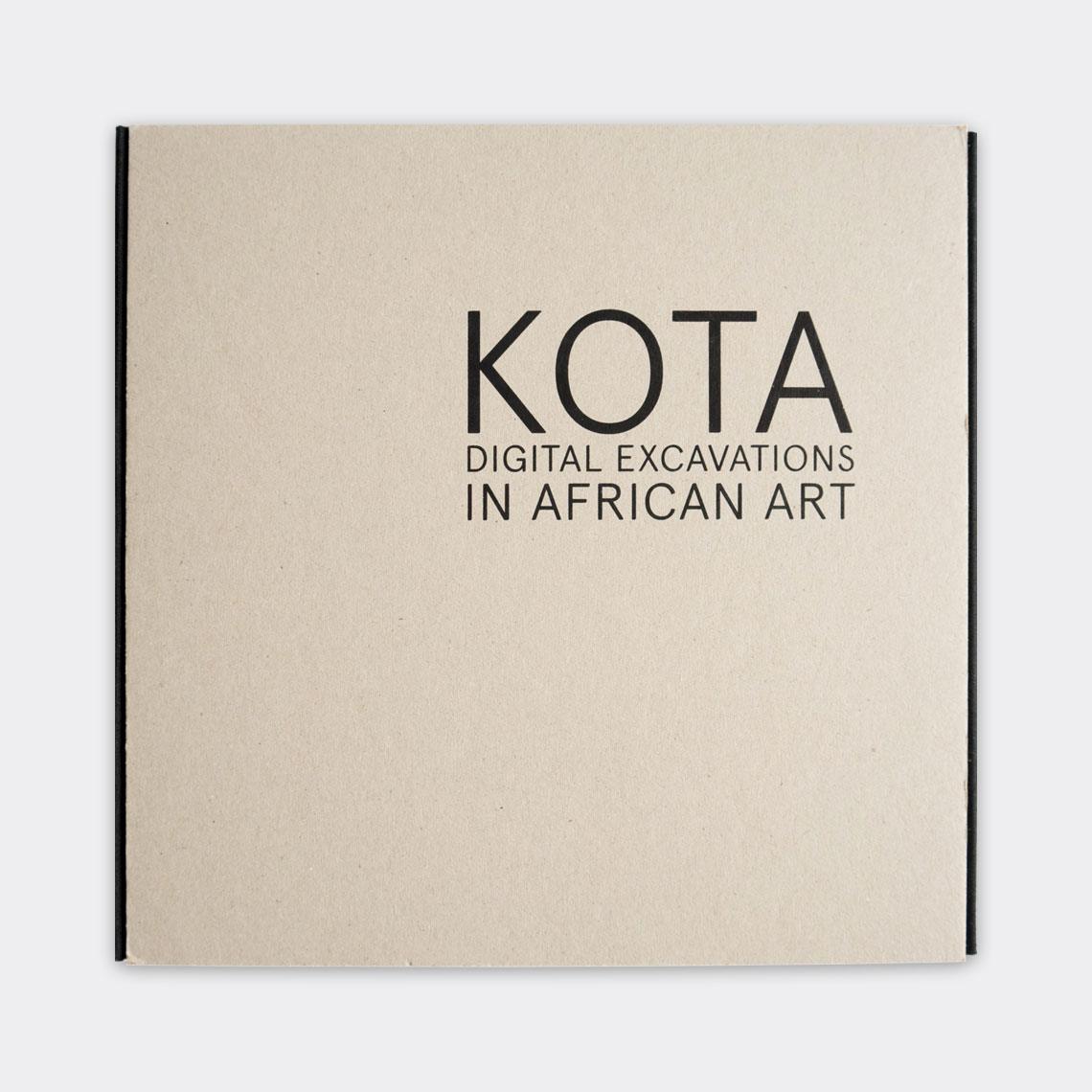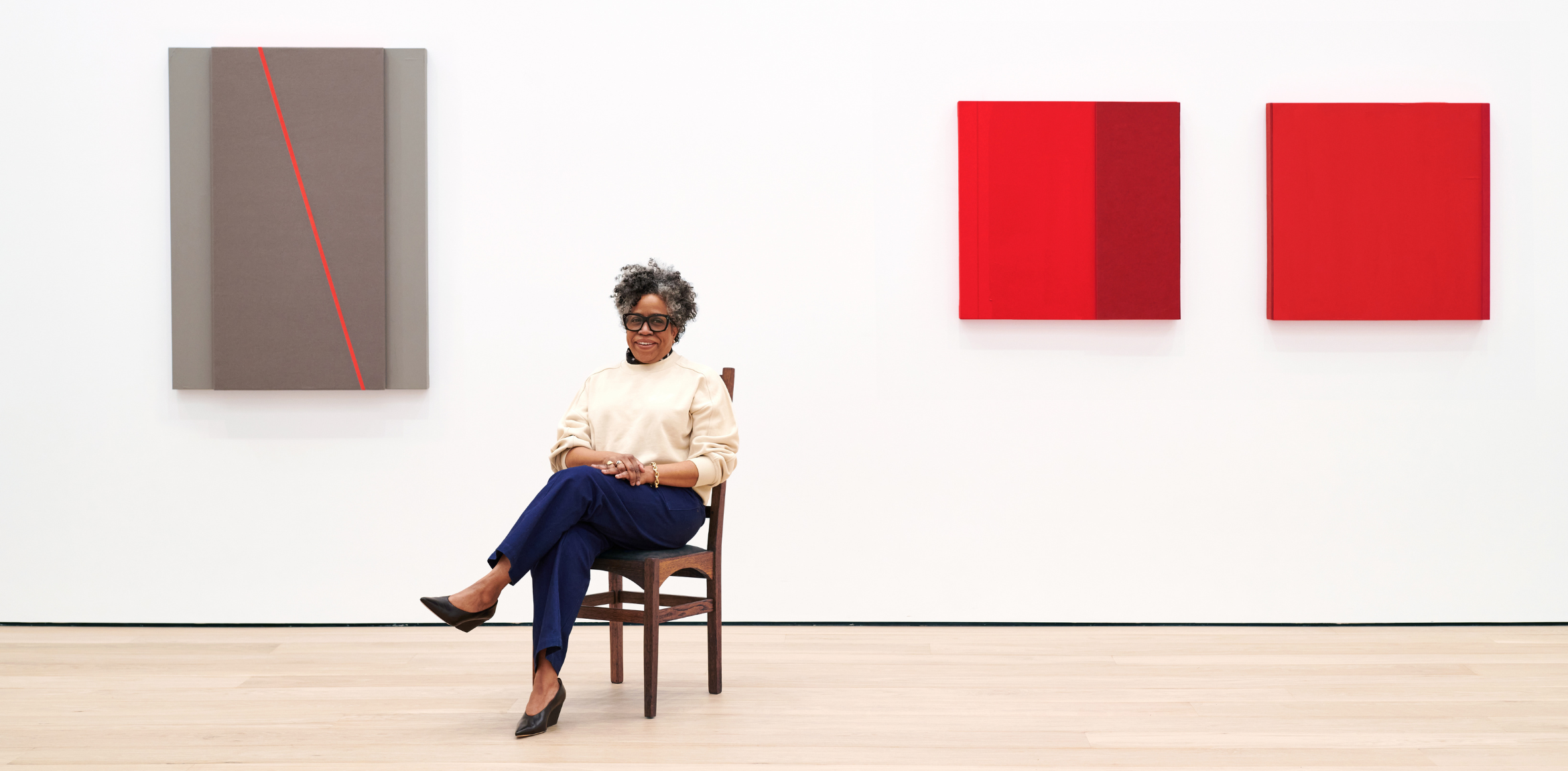Kota: Digital Excavations in African Art presented an installation of nearly fifty Kota reliquary guardian figures—unique wood-and-metal sculptures created to protect the bones of deceased ancestors. The exhibition examined a digital database created by Belgian computer engineer and independent researcher Frederic Cloth, whose combination of close looking and data-driven analysis yielded unexpected conclusions and new hypotheses about the hidden histories of Kota figures. Co-curated by Cloth and Kristina Van Dyke, a specialist in African art, Kota was the first exhibition to examine Cloth’s search engine and system of algorithms, as well as the first to focus exclusively on Kota reliquary guardians outside of the broader context of African sculpture.
Produced between the seventeenth and twentieth centuries in what is now Gabon and the Republic of Congo, Kota reliquary guardians depict abstracted human forms and were thought to bring the protection of ancestors and ensure the survival of communities. Kota range in size from eight to thirty inches and are unique among African sculpture for their incorporation of worked brass and copper over carved wood. As missionary efforts and colonialism swept through central Africa in the 1930s, much of the oral history and tradition relating to Kota was destroyed, and while many figures remain in collections today, few details are known about the objects’ specific provenances and uses.
In addition to the display of the Kota guardian figures, the exhibition featured two interactive components to encourage closer looking and deeper engagement with the objects. The first of these, the Kota Data Cloud, combined a touchscreen interface and an immersive digital projection in a gallery on the Pulitzer’s main level. Created by Rampant Interactive, a team of software and game developers in St. Louis, this digital tool allowed visitors to access the database; sort and arrange Kota into groupings; and compare their insights with those of scholars in the field. The second interactive component leveraged an exhibition-long residency by Rampant, who transformed one of the lower-level galleries into the Kota ProtoLab: an audience-responsive design studio that developed additional projects to further investigate both the reliquaries and the possibilities of the database. The studio also served as an active testing site, with Rampant’s team responding to and enhancing the projects in real time based on audience feedback and interaction.

